Last updated on April 29th, 2025 at 05:31 pm
There are thousands of different combinations when it comes to tire sizing. It is impossible to remember all of these combinations to read tire size correctly. So, how can we decide which tire size is perfect for your vehicle?
All around the world, there are two variants of writing tires. The first is metric sizing and the second is flotation sizing. We will show you how to read both of these variants by explaining the concepts so you can decide on your own which tire size is perfect for your vehicle.
The metric sizing is written something like this P200/65R15 91V on tires. So what is the meaning of each matric? Let’s discuss each metric in detail.
Tire Size For Cars/ Metric Sizing
Vehicle type

If your tire has P written at the start “P200/65R15 91V” or not “200/65R15 91V”, in both conditions, it means that the tire is made for passenger cars, which include small cars, SUVs, minivans, and light trucks. The difference between passenger car tires and other types of tires is that Passenger tires are made to carry low weight smaller in size and are installable on car rims.
Sometimes you can find different alphabets in the metrics like “LT200/65R15 91V”, and “23/65R16C 121/119R”. If that is the situation then the tires are specially made for light trucks and SUVs to carry more weight and give off-road traction.
If there is a “T” at the start “T105/65R14 83L T” then the tire will be a spare wheel, which is smaller in size and uses as a substitute in case of any tire gets damaged. In the case of “ST” “ST200/65R15 91V” the tire is made for a special trailer to carry more weight and is small in size.
Tire width
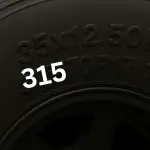
These numbers are written in millimeters and it is the measurement of a tire width from one side of the sidewall to the other. The wider the tire will be the more traction it will give.
Aspect ratio
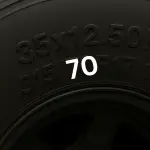
Aspect ratio is written in percentage, it is a percentage of tire width and a tire’s height off the rim. If the aspect ratio is 65 then the tire height is 65% of its width. It is calculated by dividing the width by the height of the tire.
Tire construct

The R means that the tire is radial built and the internal ply cords are spread in a radial direction which moves in the tire’s direction. Two other kinds of construct come in the tire and their symbols are “D” “diagonal” and “B” “bias ply”
Rim diameter

It is the number in inches of rims diameter. It is important to check this number on the tire and vehicle rims because if there is a difference between them the tire won’t sit properly on the rims. the diameter helps in choosing the right wheels for your car.
Load Index
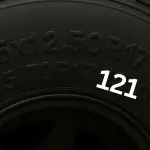
It is not the exact number capacity a tire can carry but it is as per the indexing. If the tire has a 91 load index then it means that the tire is capable of holding 1356 LBS of weight. You can check the complete list of load index and capacity here
Speed rating
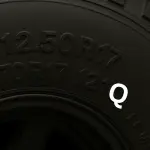
The speed rating is rated on several alphabets based on tests performed by manufacturers. If the tire has a speed rating of V class then it means that the tire can reach up to 149Mph/239Kph you can find the complete list of speed ratings here.
Flotation sizing
Flotation sizing is usually used on light trucks, off-road, and heavy vehicle tires. It is completely different in reading as compared to metric format tires. And they look something like this “33×12.50R17LT 120Q”
Overall diameter
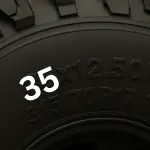
The first set of numbers is the overall diameter of a tire which can be calculated by multiplying sidewall height by 2 and adding rim diameter. You can check it on your tire by yourself easily.
Sidewalls width

It is the measurement in inches from one side of a sidewall to the other sidewall. It is deceived in tire buying when you are looking for off-road traction.
Tire construction

Tire constructs are the same in both variants of sizing the noted R means that the tire is radial built. And mostly tires are built-in radial constructs due to durability and strong plies.
Rim diameter

The rim diameter is noted in inches in which the tire installed. Keeping it in mind when buying a new tire.
Vehicle type
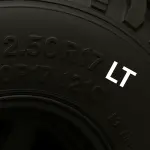
LT stands for light truck, these tires are built specifically for light trucks and SUV vehicles. These tires are good for off-roads and bring traction.
Load index

The load index is the rating based on a tire’s ability to carry weight. The index lies between 1-150 and based on the tire’s strength to carry the weight it is rated accordingly.
Speed rating

Again the same concept of speed rating as we mentioned above in metrics sizing. Based on the tire’s speed efficiency it rated an alphabet.
Treadwear grade
Treadwear is graded based on the tire performance of 6000 Miles. If the tire resist all the test mentioned by the government it is given a 100 grade and if the tire perform twice as better on these test then it will be graded 200 treadwear grade
Traction grades
The tire traction scale lies between the alphabets AA, A, B, C. AA is the best and C is the worst. If the tire is graded C traction then it means that the tire has just passed on its traction control test.
Temperature grades
Unlike the traction grade, the temperature is only graded with A, B, and C. The same value for each alphabet. Temperature grade is given based on the tire’s ability to perform in heat and dry conditions. The tire with more heat damage gets the C grade while the tire with no damage gets the A grade. The criteria are given by the government for all three of these grades.
Conclusion
These are all of the important numbers that can be found on tires, and this guide will surely help you read the tire size of your car. also if you want to learn how to install the tire on your wheels and how to choose the right tires for your car, you can read them on our website as well.
We conclude this article with the hope that this article is helpful and understanding for you. If you still wondering about anything related to tire size then leave your query in the comment section, and we will try to reach you as soon as we can.